Idea by
Meng Li & Linda Zhang
Studio Pararaum
Call for ideas 2021
Rock Skin: Don’t forget the mountain
Rock Skin: Don’t forget the mountain
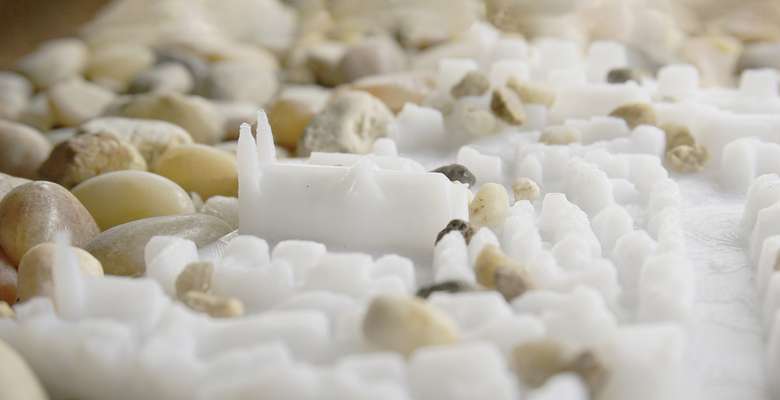
- New alliances
J. Tronto and B. Fisher defined care as activities to maintain, continue, and repair our ‘world’. By contrast, modern progress often prioritizes production as the centre of life, undermining the dimension of care. Within this paradigm, architectural production remains consumptive - we build thriving cities by depleting the mountain. Yet, a polished stone slab often makes us forget that it was once part of the mountain. Standing in Zurich’s Tessinerplatz, who could feel connected to the distant mountain, with which the square is built and named?
With care, we aim to forge a new relationship between building and sourcing. Rock-skin is a non-abrasive mold making technique capable of taking an imprint of the mountainous surfaces with natural latex. Without depleting the mountain, the molds are used to create a growing collection of experimental objects and models that reconnect us to the geological whole. In a way, it also begins to offer a relational paradigm of caring for the future.
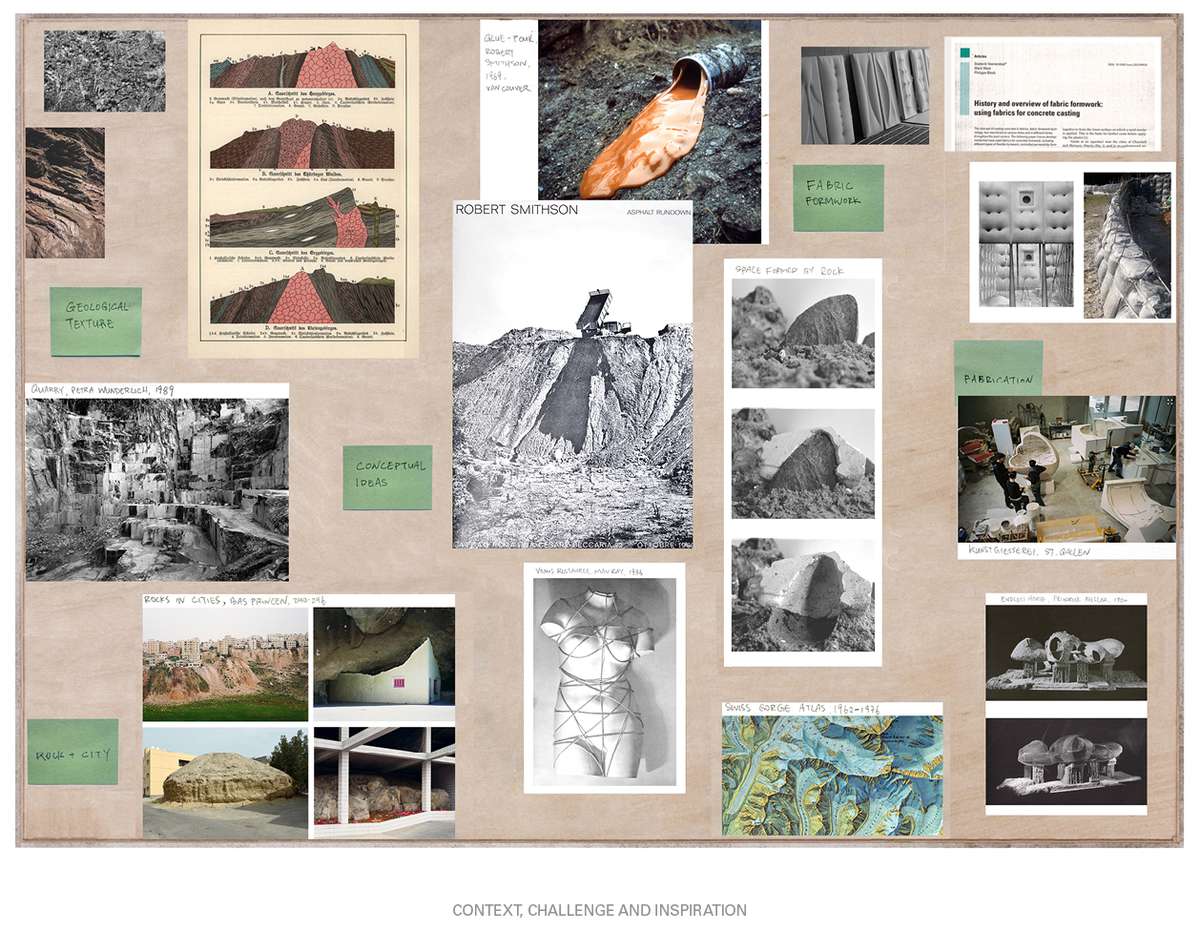
Geology has its own kind of entropy, says Robert Smithson, where everything is gradually wearing down. Little by little, wind erodes rocks and water carries away river banks. Contrary to a mechanistic logic, this process is irreversible - it continuously metamorphosizes our earth. Yet, by extracting materials for building, we intervene with geological entropy in a very different way. Today, the seemingly immovable formation over millions of years is being dismantled with an unimaginable speed.
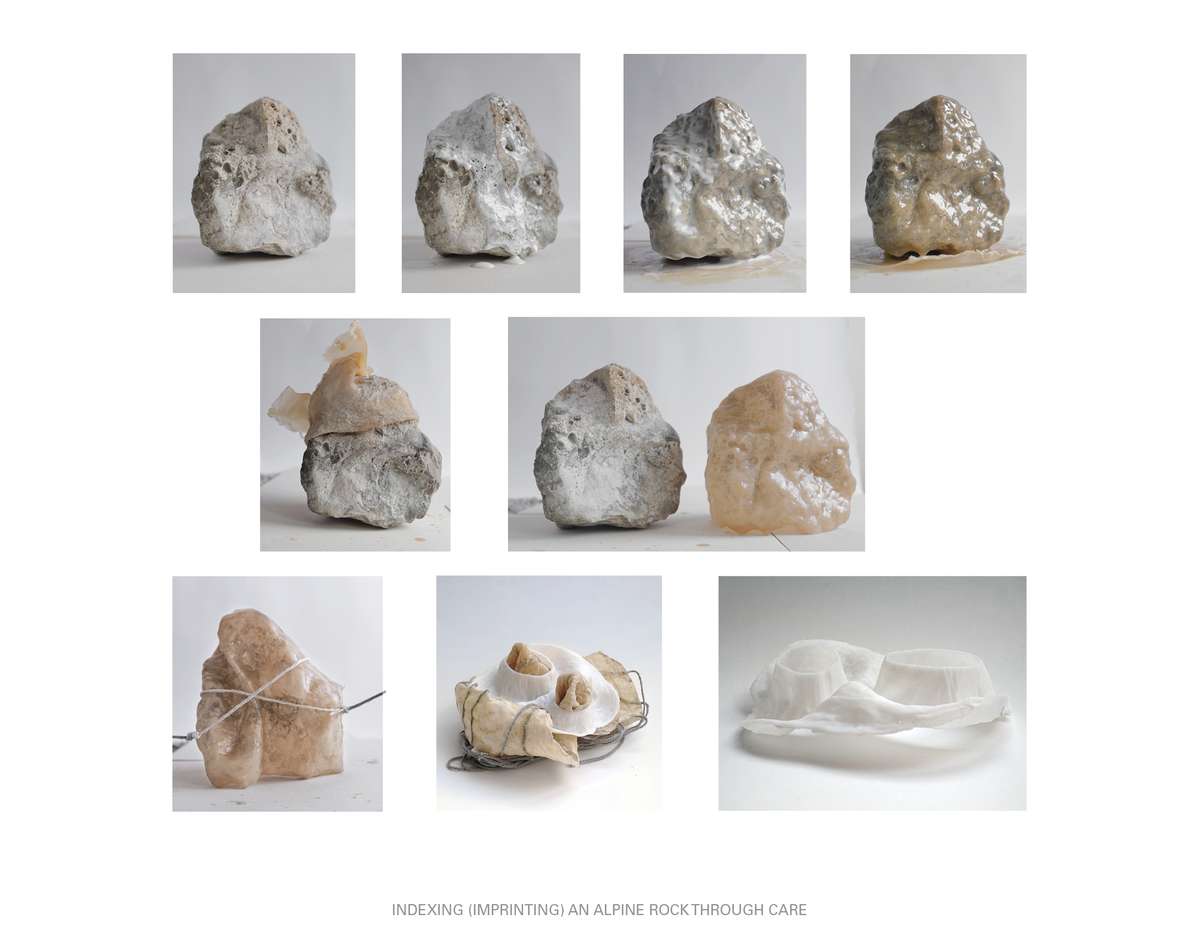
Not unlike taking a photo, where light traces objects on films, we make imprints of mountain surfaces with thin layers of natural latex. Peeling off the latex, we leave the mountain “untouched” while a cast against this Rock-skin mold “recaptures” the disappearing geological formation—a double act of resistance against depletion. In turn, as we encounter the cast, we can still experience the reality of the mountain through its texture and form, even though the mountain isn’t there directly.
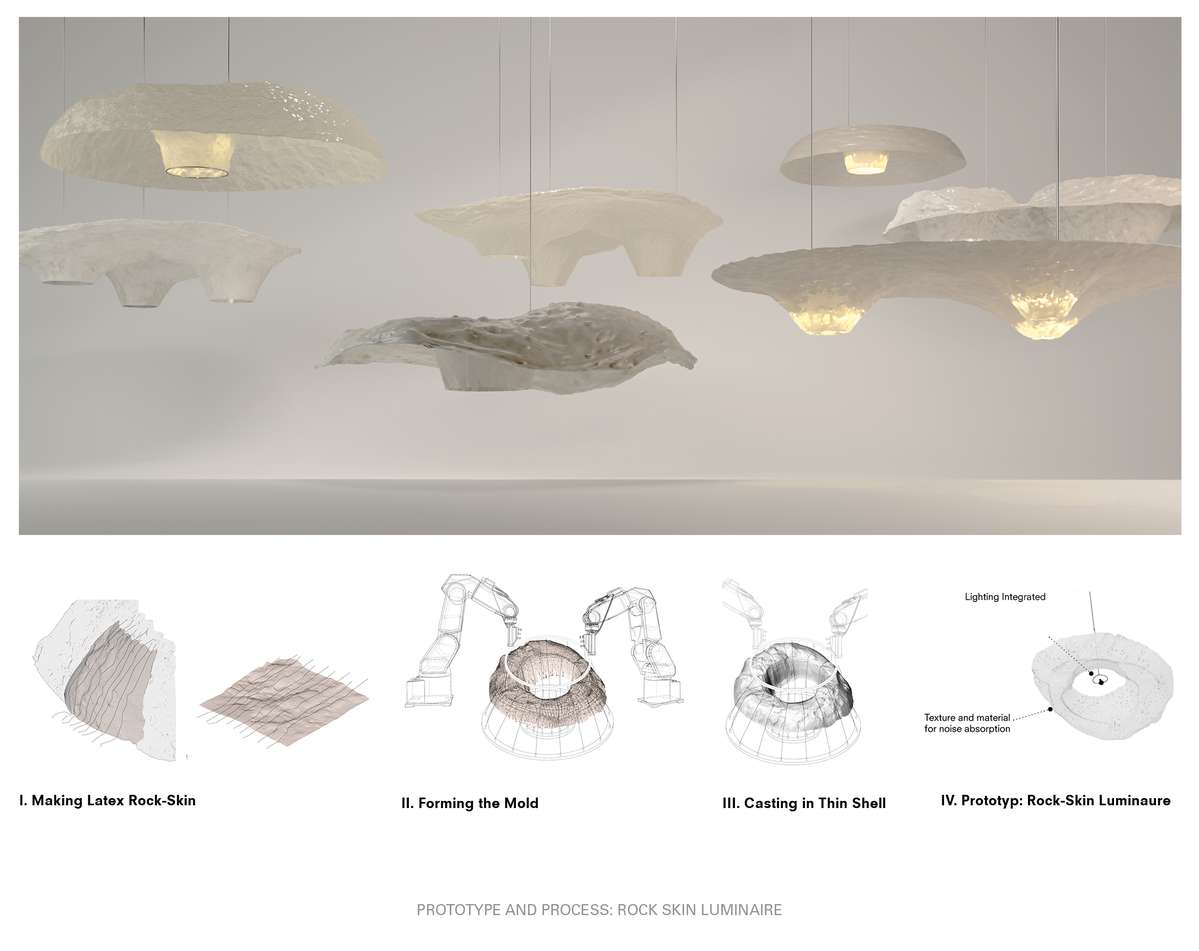
While the project essentially designs a process of mixing intent/constraint, found/undefined, and geological/man-made, we expect to develop the project that goes beyond the making of singular works. The process of care and maintenance is an iterative process. Likewise the Rock-skins can be continuously reused when carefully maintained. The initial prototype, hanging ‘rock shell luminaire’, will allow us to test alternative sustainable materials to identify potential applications of the process.
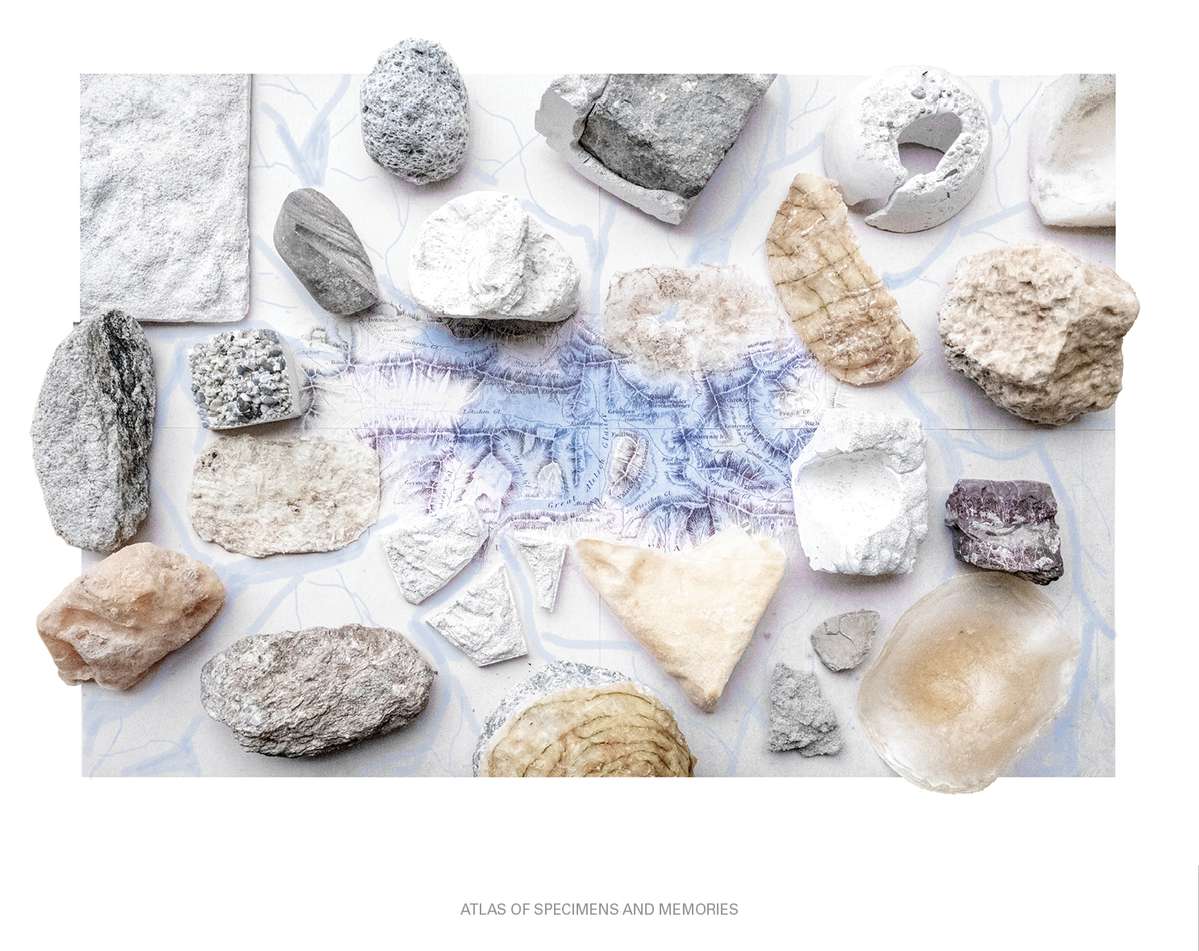
Searching, finding, collecting, indexing, casting and putting together – our research is also an ongoing process to create atlas of specimens and memories across space and time. By gathering and rearranging, namely, creating incidental alliances and serendipitous encounters, we intend to explore new ways of rethinking in relationships - with building, nature, material and life – and weave them into an interconnected sustaining web.
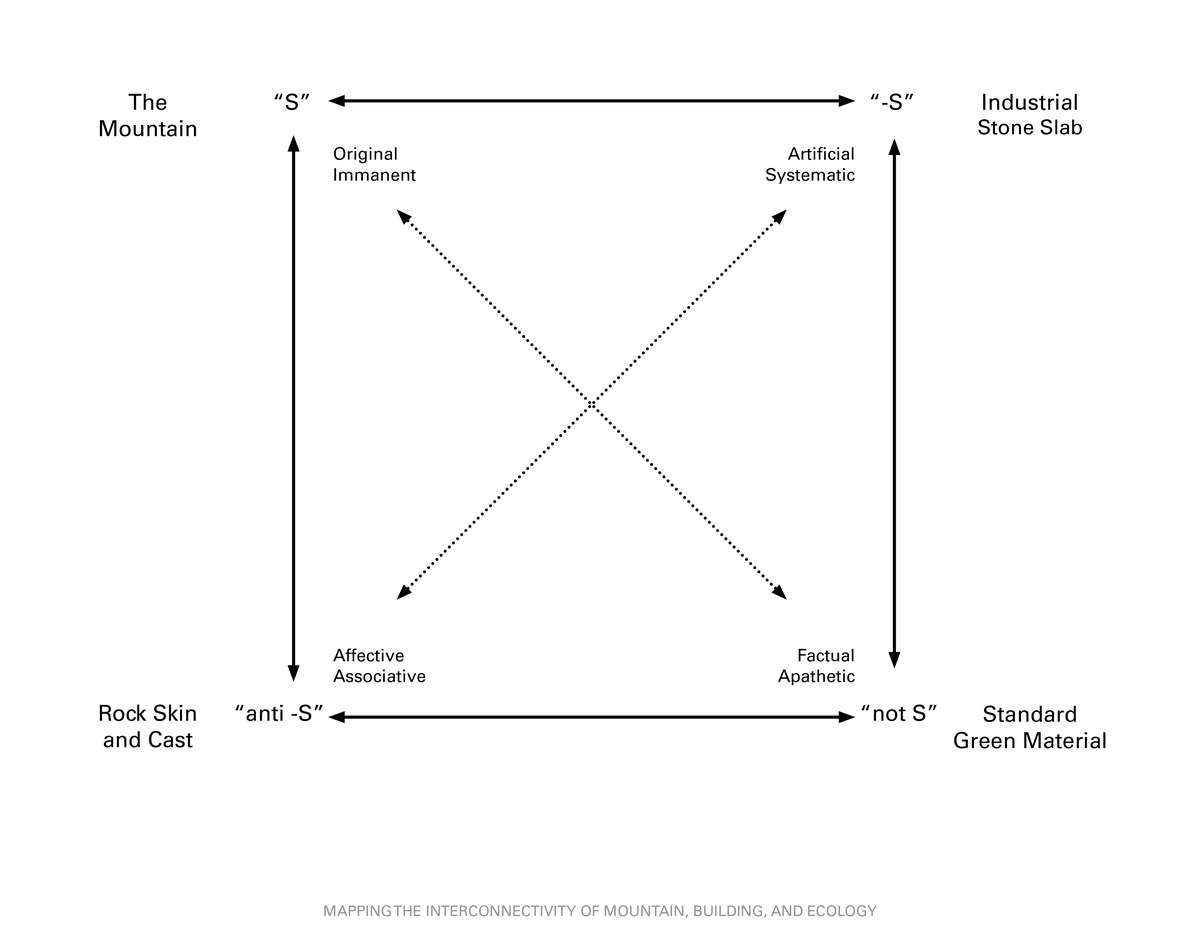
Based on the premise of interconnectedness, we borrow the Greimas square as a conceptual framework through which a manifold network of possible complementary, contrary and contradictory positions can be derived. Mapping the Rock-skin in this dynamic field is not a conclusive action but a beginning one – an appeal to redefine sustainability beyond the isolated factual “greenness”, through a fuller understanding of all forces at play.
Rock Skin: Don’t forget the mountain
Rock Skin: Don’t forget the mountain

- New alliances
J. Tronto and B. Fisher defined care as activities to maintain, continue, and repair our ‘world’. By contrast, modern progress often prioritizes production as the centre of life, undermining the dimension of care. Within this paradigm, architectural production remains consumptive - we build thriving cities by depleting the mountain. Yet, a polished stone slab often makes us forget that it was once part of the mountain. Standing in Zurich’s Tessinerplatz, who could feel connected to the distant mountain, with which the square is built and named?
With care, we aim to forge a new relationship between building and sourcing. Rock-skin is a non-abrasive mold making technique capable of taking an imprint of the mountainous surfaces with natural latex. Without depleting the mountain, the molds are used to create a growing collection of experimental objects and models that reconnect us to the geological whole. In a way, it also begins to offer a relational paradigm of caring for the future.
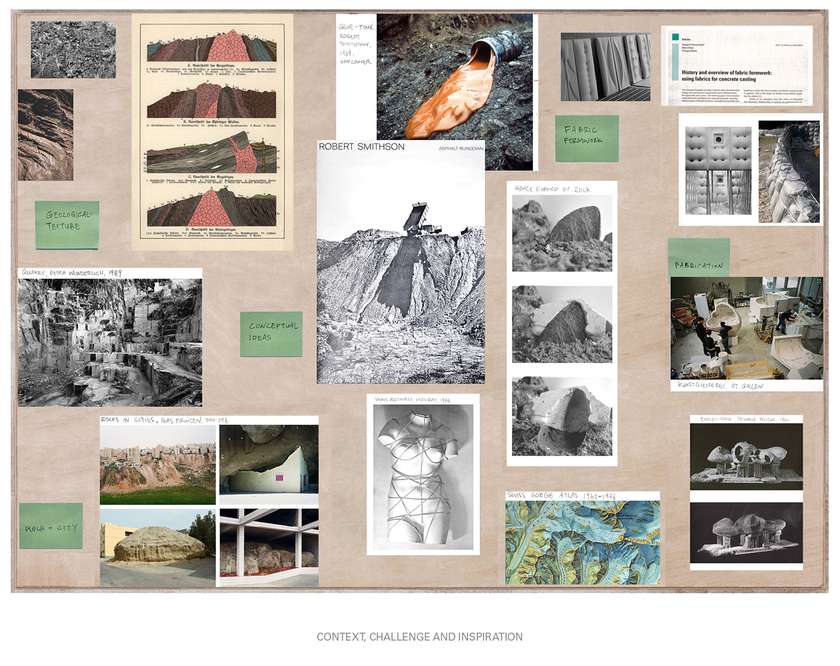
Geology has its own kind of entropy, says Robert Smithson, where everything is gradually wearing down. Little by little, wind erodes rocks and water carries away river banks. Contrary to a mechanistic logic, this process is irreversible - it continuously metamorphosizes our earth. Yet, by extracting materials for building, we intervene with geological entropy in a very different way. Today, the seemingly immovable formation over millions of years is being dismantled with an unimaginable speed.
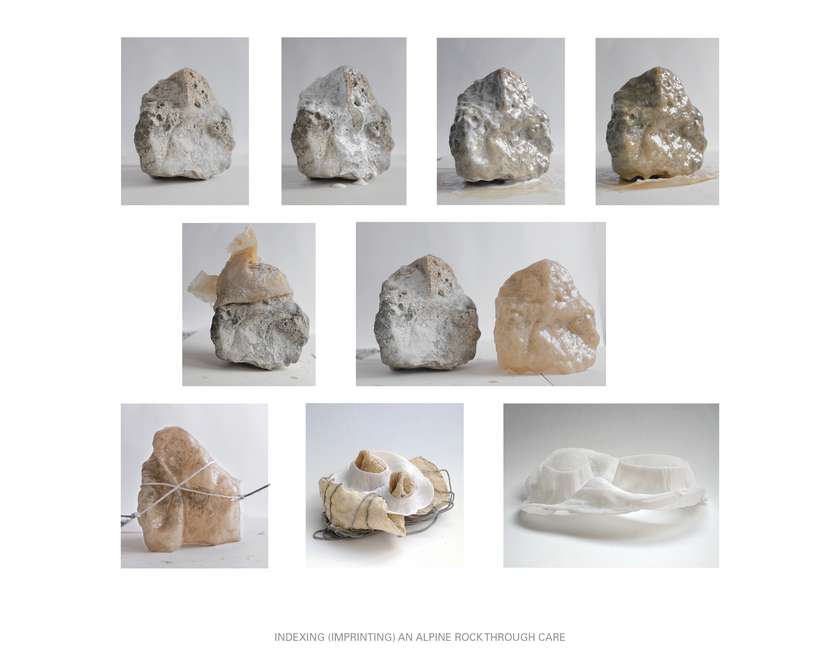
Not unlike taking a photo, where light traces objects on films, we make imprints of mountain surfaces with thin layers of natural latex. Peeling off the latex, we leave the mountain “untouched” while a cast against this Rock-skin mold “recaptures” the disappearing geological formation—a double act of resistance against depletion. In turn, as we encounter the cast, we can still experience the reality of the mountain through its texture and form, even though the mountain isn’t there directly.
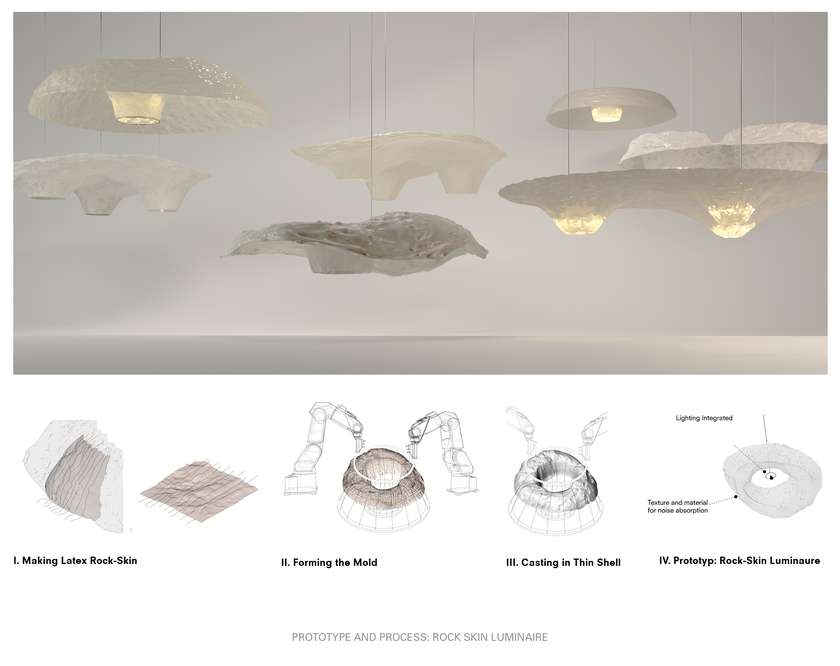
While the project essentially designs a process of mixing intent/constraint, found/undefined, and geological/man-made, we expect to develop the project that goes beyond the making of singular works. The process of care and maintenance is an iterative process. Likewise the Rock-skins can be continuously reused when carefully maintained. The initial prototype, hanging ‘rock shell luminaire’, will allow us to test alternative sustainable materials to identify potential applications of the process.
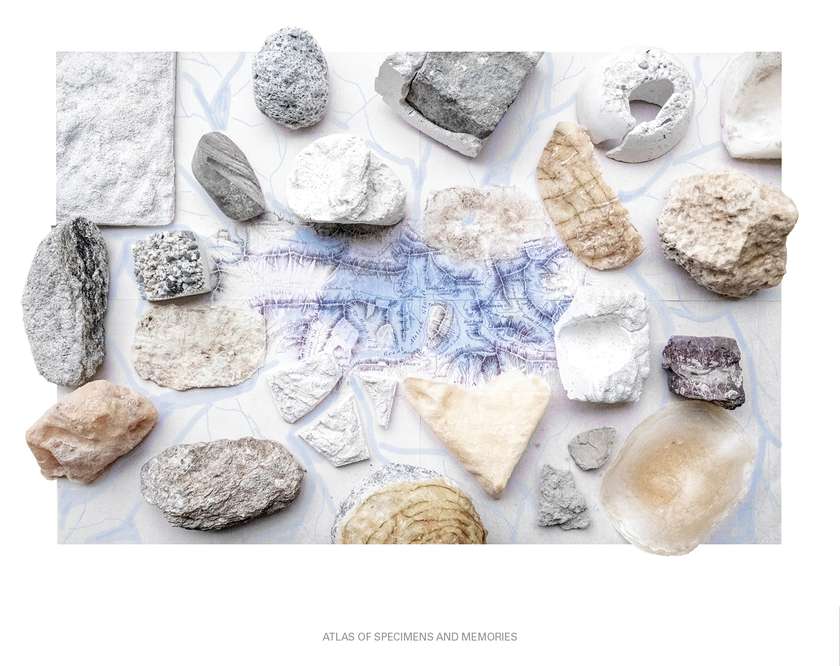
Searching, finding, collecting, indexing, casting and putting together – our research is also an ongoing process to create atlas of specimens and memories across space and time. By gathering and rearranging, namely, creating incidental alliances and serendipitous encounters, we intend to explore new ways of rethinking in relationships - with building, nature, material and life – and weave them into an interconnected sustaining web.
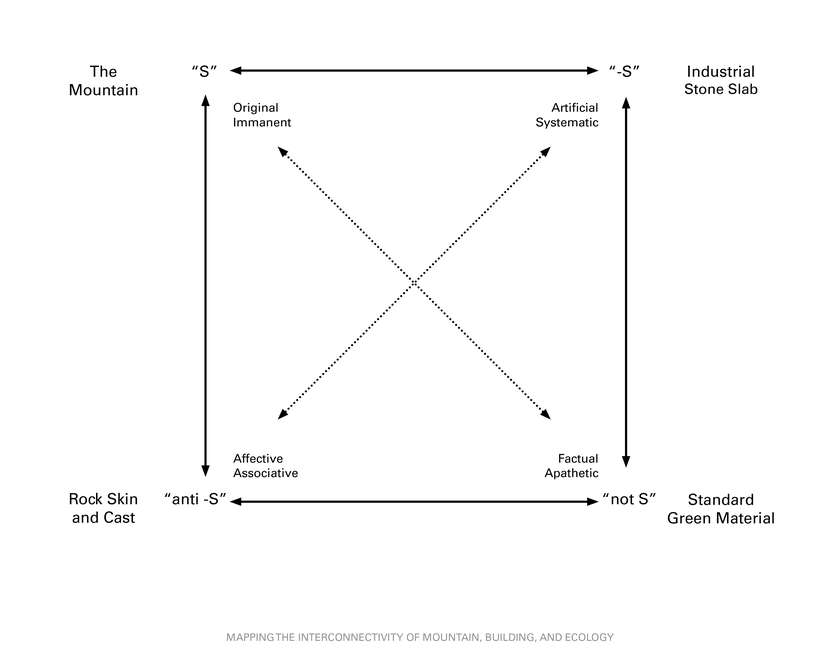
Based on the premise of interconnectedness, we borrow the Greimas square as a conceptual framework through which a manifold network of possible complementary, contrary and contradictory positions can be derived. Mapping the Rock-skin in this dynamic field is not a conclusive action but a beginning one – an appeal to redefine sustainability beyond the isolated factual “greenness”, through a fuller understanding of all forces at play.
